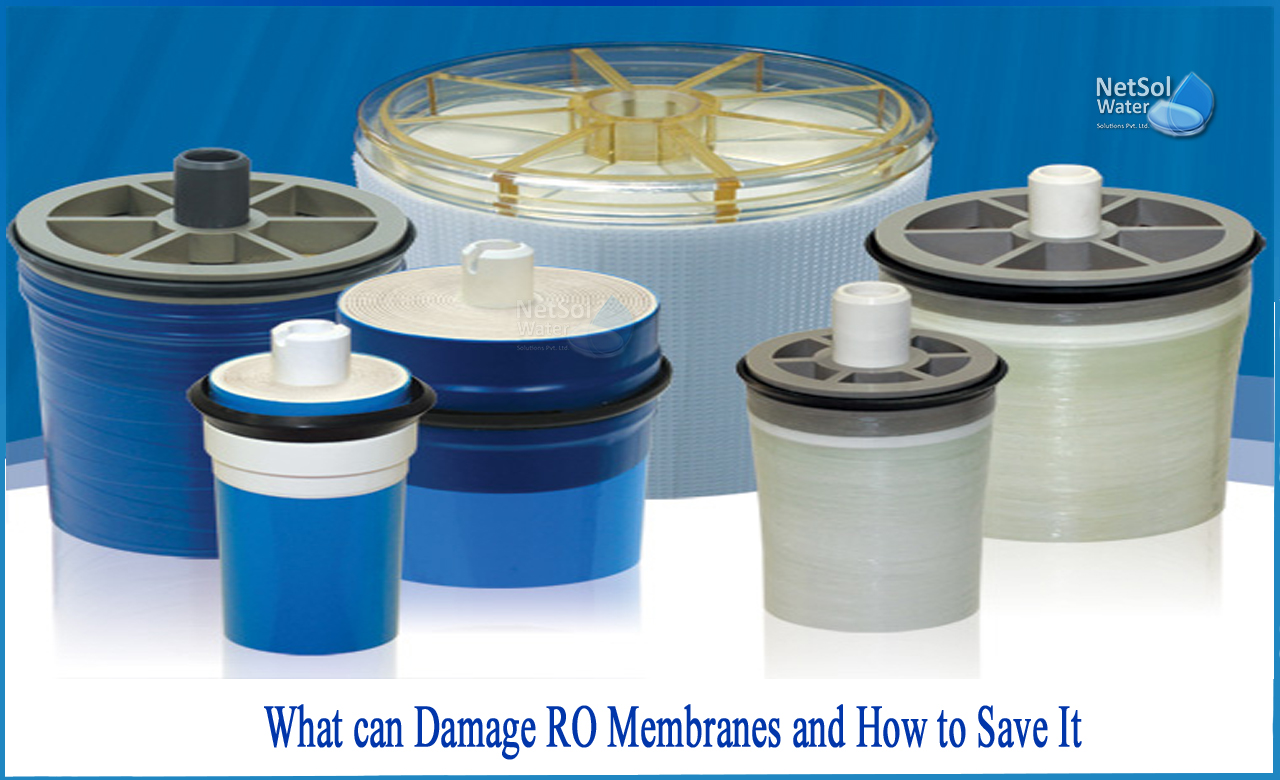What can damage RO membranes and how to save it?
The fundamental goal of Reverse Osmosis water treatment is to reject as many ions as possible from raw water while allowing as much treated water flow as feasible. When these two parameters' performance deteriorates, it's critical to identify the source of the failure so that the appropriate methods may be used to restore it. Membrane autopsy are currently a highly significant source of information for understanding the mechanisms that may have resulted in the loss of membrane capacities.
Damage to RO membranes
Many different processes can damage the membrane surface during reverse osmosis membrane performance in plants, including increases in differential pressure, backpressure phenomena, abrasion processes from fouling, massive or micro damages from scaling, oxidation processes, or even degradation with time or cleanings. These damages are frequently linked to an increase in flow rate permeate and a decrease in salt rejection.
Some of the physical and chemical damages associated with RO membranes are:
|
Physical damage |
Chemical damage |
|
Abrasion marks from fouling nature Marks from spacer protrusion Marks from spacer material Polyamide layer damages due to a massive presence of fouling (mainly due to scaling processes). Polyamide bubbles (permeate overpressure) Telescoping Compacted membranes |
Dosage of oxidant agents (mainly chlorine on polyamide-polysulphone membranes) Use of aggressive cleaners Use of extreme pH |
Occurrence of physical & chemical damage
Physical damage might occur as a result of leaks in the pre-treatment system, fouling, or operational issues.In terms of chemical damage, both chlorination and chemical cleaning are useful in reducing membrane fouling and restoring the performance of membranes in operation. The loss of structural integrity of component polymers appears to be the cause of polyamide membrane performance degradation.
One of the most extensive research lines in RO technologies is chlorine oxidation of polyamide-polysulphone membranes. There are several articles regarding membrane oxidation by chlorine, where the reaction mechanism is well defined, due to the widespread use of chlorine in RO plants and its recognized damage to polyamide membranes.
The loss of salt rejection capabilities and, more often than not, an increase in permeate flow rate are two of the most obvious symptoms of RO membrane deterioration.
Key points about the RO membrane damages_
1: Due to the presence of fouling, the main damages found on membrane autopsy are physical. In many circumstances, the presence of this fouling might mask the existence of membrane damage and the true cause of membrane failure.
2: In order to evaluate the type of the damage, several metrics and information from the membrane in question must be considered.
3: Both physical and chemical damage to the membrane surface results in changes in specific features and properties, which might be employed as complimentary analytical approaches.
Maximizing membrane life_
Membranes used in reverse osmosis (RO) are vulnerable to a variety of foulants and scales.
Organics, metals, clays, and colloidal particles are all common foulants found in RO systems. Carbonate, phosphate, sulphate, and silica are the most common scales found. To eliminate these foulants and scales, onsite cleaning is the standard, but sometimes a desire for cleaning optimization or a need for process troubleshooting prompts operators to conduct a more thorough study.
As a result, sending membranes for offsite cleaning to a facility that can clean membranes individually or in small groups is one alternative. A membrane autopsy, which necessitates the sacrifice of a membrane, is another typical method.
A membrane autopsy involves membrane dissection, foulant and/or scale collection, foulant and/or scale identification, and a complete cleaning investigation on flat sheet samples extracted from the whole element. Once the cleaning approach has been perfected in the lab, it may be replicated on entire membranes from the same location to see how the clean affects the membranes on a bigger scale.
Expansion of RO System!
The reverse osmosis (RO) sector is continuing to expand, with the membrane market expected to rise 15.75 percent by 2021. Droughts, population growth, trash disposal limits and expenses, greater industrialization, and environmental rules have all contributed to this expansion. Despite the fact that membranes have gotten less expensive to acquire over time, the requirement to recover components' performance rather than dispose of them remains.
The best commercial RO plant manufacturers in India!
If you are giving a thought to RO membrane protection or any kind of such activity, then you can contact Netsol Water as we are the leading manufacturers of RO and related plants.
Our plants are made with great care and attention to detail, which is why they function so well. Our systems can provide clean, pure, filtered water if your company uses it. These plants are both cost-effective and efficient, capable of generating thousands of litres of pure, filtered water.
Netsol Water is Greater Noida-based leading water & wastewater treatment plant manufacturer. We are industry's most demanding company based on client review and work quality. We are known as best commercial RO plant manufacturers, industrial RO plant manufacturer, sewage treatment plant manufacturer, Water Softener Plant Manufacturers and effluent treatment plant manufacturers. Apart from this 24x7 customer support is our USP. Call on +91-9650608473, or write us at enquiry@netsolwater.com for any support, inquiry or product-purchase related query.



